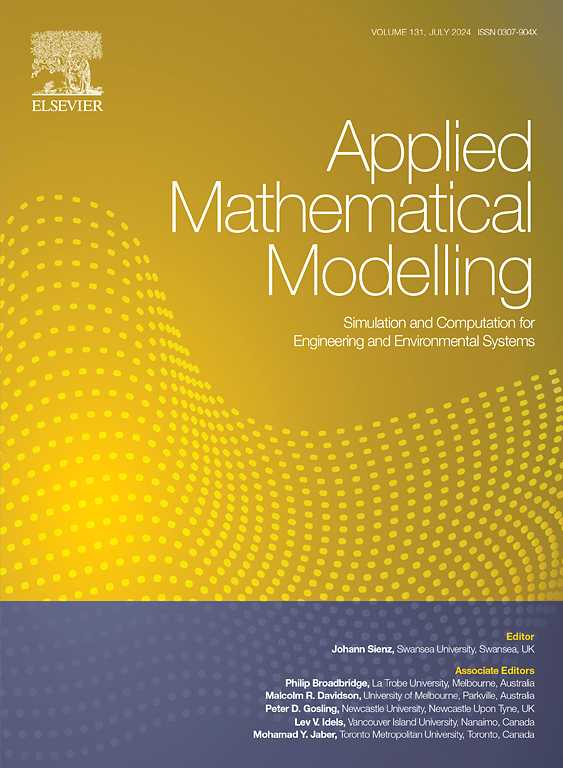Analytical springback modelling for thermal-mechanical bending of TA18 tube under non-isothermal loading
IF 4.4
2区 工程技术
Q1 ENGINEERING, MULTIDISCIPLINARY
引用次数: 0
Abstract
The thermal-mechanical bending process is a promising forming method for high-strength hollow tubular structures, enabling the forming limit's extension, particularly for difficult-to-bend metal tubes such as TA18 tubes. However, this forming process complicates the springback characteristics due to the thermal-mechanical coupling effect under multi-die heating and constraint strategies. To further reveal the elastic release mechanism of TA18 thin-walled tubes post-unloading, we propose an analytical springback modeling method for the warm rotary draw bending (WRDB) process. A continuous steady-state heat transfer theoretical model across the tube cross-section is developed to model the thermal field and exactly capture the material flow behavior. Based on the experimental TA18 temperature softening behavior, the distribution of asymmetric strain and the nonlinear thermal field is introduced into the springback modeling, revealing the behavior of neutral layer shifting (NLS) and the evolution of yield surface across the cross-section under non-isothermal loading. Compared to finite element (FE) modeling, quantitative results show that the theoretical model can accurately predict tube springback behavior in experiments, achieving an average absolute relative error (AARE) below 1.4 % with low computational cost. The temperature effect on springback under different heating strategies is attributed to NLS and stress-strain redistribution induced by material temperature softening. The temperature difference of the local thermal field aggravates the NLS and contributes to the non-uniform tensile and compressive deformation, which is significant in the bending case with large diameter tubes and induces pronounced springback behavior.
求助全文
约1分钟内获得全文
求助全文
来源期刊

Applied Mathematical Modelling
数学-工程:综合
CiteScore
9.80
自引率
8.00%
发文量
508
审稿时长
43 days
期刊介绍:
Applied Mathematical Modelling focuses on research related to the mathematical modelling of engineering and environmental processes, manufacturing, and industrial systems. A significant emerging area of research activity involves multiphysics processes, and contributions in this area are particularly encouraged.
This influential publication covers a wide spectrum of subjects including heat transfer, fluid mechanics, CFD, and transport phenomena; solid mechanics and mechanics of metals; electromagnets and MHD; reliability modelling and system optimization; finite volume, finite element, and boundary element procedures; modelling of inventory, industrial, manufacturing and logistics systems for viable decision making; civil engineering systems and structures; mineral and energy resources; relevant software engineering issues associated with CAD and CAE; and materials and metallurgical engineering.
Applied Mathematical Modelling is primarily interested in papers developing increased insights into real-world problems through novel mathematical modelling, novel applications or a combination of these. Papers employing existing numerical techniques must demonstrate sufficient novelty in the solution of practical problems. Papers on fuzzy logic in decision-making or purely financial mathematics are normally not considered. Research on fractional differential equations, bifurcation, and numerical methods needs to include practical examples. Population dynamics must solve realistic scenarios. Papers in the area of logistics and business modelling should demonstrate meaningful managerial insight. Submissions with no real-world application will not be considered.
 求助内容:
求助内容: 应助结果提醒方式:
应助结果提醒方式:


